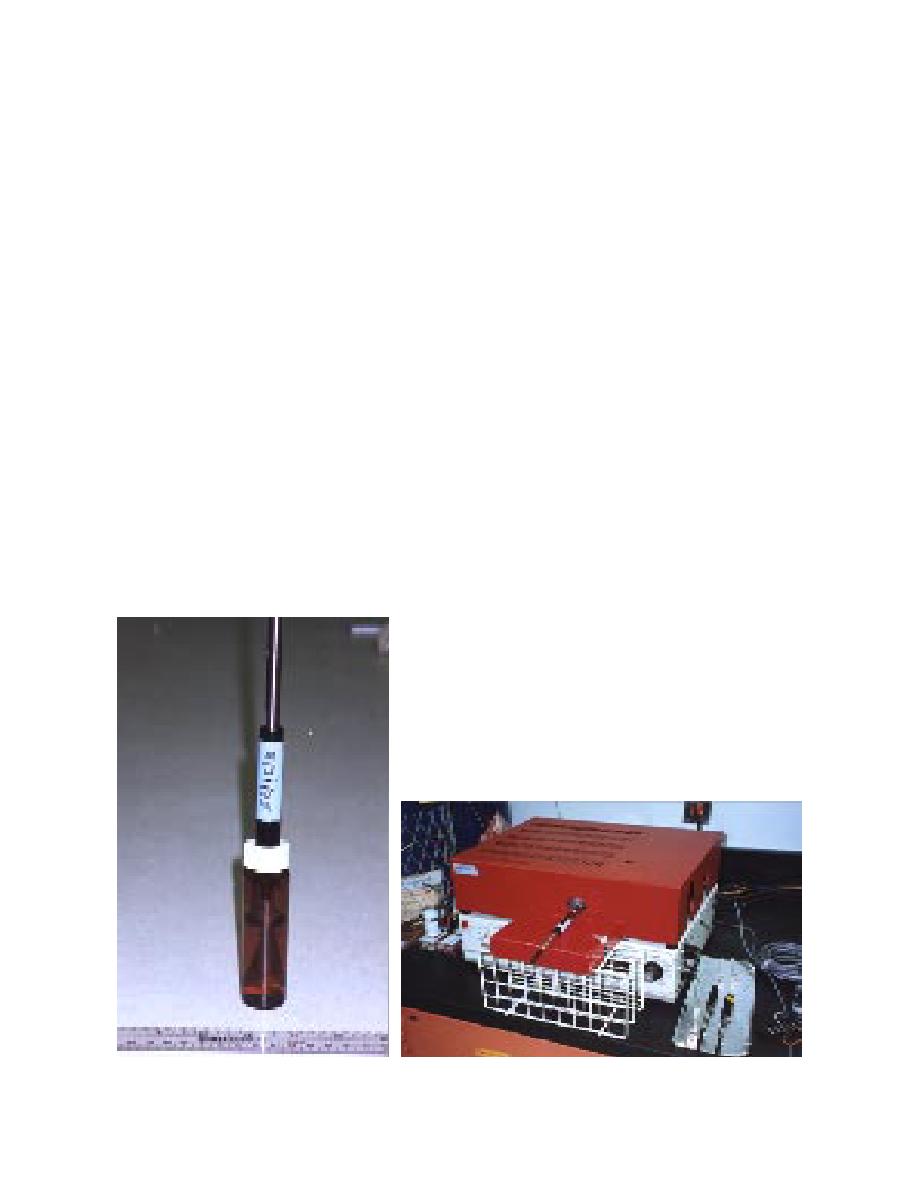
cap equipped with a septum. Each sample was
SPME
SPME fiber assemblies were obtained from Su-
shaken manually for 15 seconds, and then the
pelco (Bellefonte, Pennsylvania) (Fig. 1). These
SPME phase was exposed statically to the head-
assemblies are composed of a fused silica fiber
space for five minutes such that there was no phys-
coated with a stationary phase (we purchased the
ical contact between the fiber and the sample. The
100-m polydimethylsiloxane-coated fibers). The
SPME phase was thermally desorbed as described
fiber is attached to a holder with a septum-pierc-
for the water samples.
ing sheath that protects the fiber. The holder also
allows precise positioning of the fiber in samples
Solvent extraction
and the injection port of the gas chromatograph.
For water samples with white phosphorus con-
centrations less than 0.1 g/L, preconcentration
In general, the fiber is exposed to a sample for a
short period, during which time analytes sorb to
of the solvent extracts is required. A non-evapora-
the stationary phase. Then the fiber is placed into
tive approach is used since white phosphorus is
the injection port of a gas chromatograph to ther-
volatile and air-sensitive (Walsh 1995). A 500-mL
mally desorb the analytes. We used the SPME fi-
aliquot of water was mixed with 50 mL of diethyl
bers as follows: for each water sample, a 25-mL
ether by shaking in a 500-mL separatory funnel
aliquot was placed in a 40-mL vial. The vial was
for five minutes. After phase separation, all of the
either allowed to stand statically at room temper-
ether layer was collected. The volume of the ether
ature or was placed in a sonic bath for five or ten
layer recovered varied depending on the temper-
minutes, during which time the SPME phase was
ature and the ionic strength of the samples; it gen-
exposed to the headspace (Fig. 2a). The SPME
erally ranged from 3 to 10 mL. The volume of the
phase was immediately transferred to a heated
ether layer was further reduced to 0.51.0 mL by
(200C) injection port of the gas chromatograph
adding the ether extract to approximately 50 mL
(Fig. 2b) described below.
of reagent-grade water in a 125-mL separatory
For each sediment/soil sample, a 40-g subsam-
funnel and shaking for one minute. After phase
ple was placed in a 120-mL jar containing 10.0 mL
separation, the ether layer was collected in a 5.0-
mL graduated cylinder and the exact volume mea-
of reagent-grade water. The jar was sealed with a
sured. This procedure resulted in a preconcentra-
tion factor of 500 to 1000. White phosphorus con-
centration in the extract was then determined by
gas chromatography. Extracts were analyzed im-
mediately to minimize loss due to solvent evapo-
ration.
For samples with white phosphorus concentra-
tions greater than 0.1 g/L (Walsh 1995), simple
solvent extraction provides sufficient concentra-
tion. A 25-mL aliquot of water was shaken for five
Figure 2. (left) Headspace SPME followed by (right) thermal desorption in injection port of gas chromatograph.
3



 Previous Page
Previous Page
